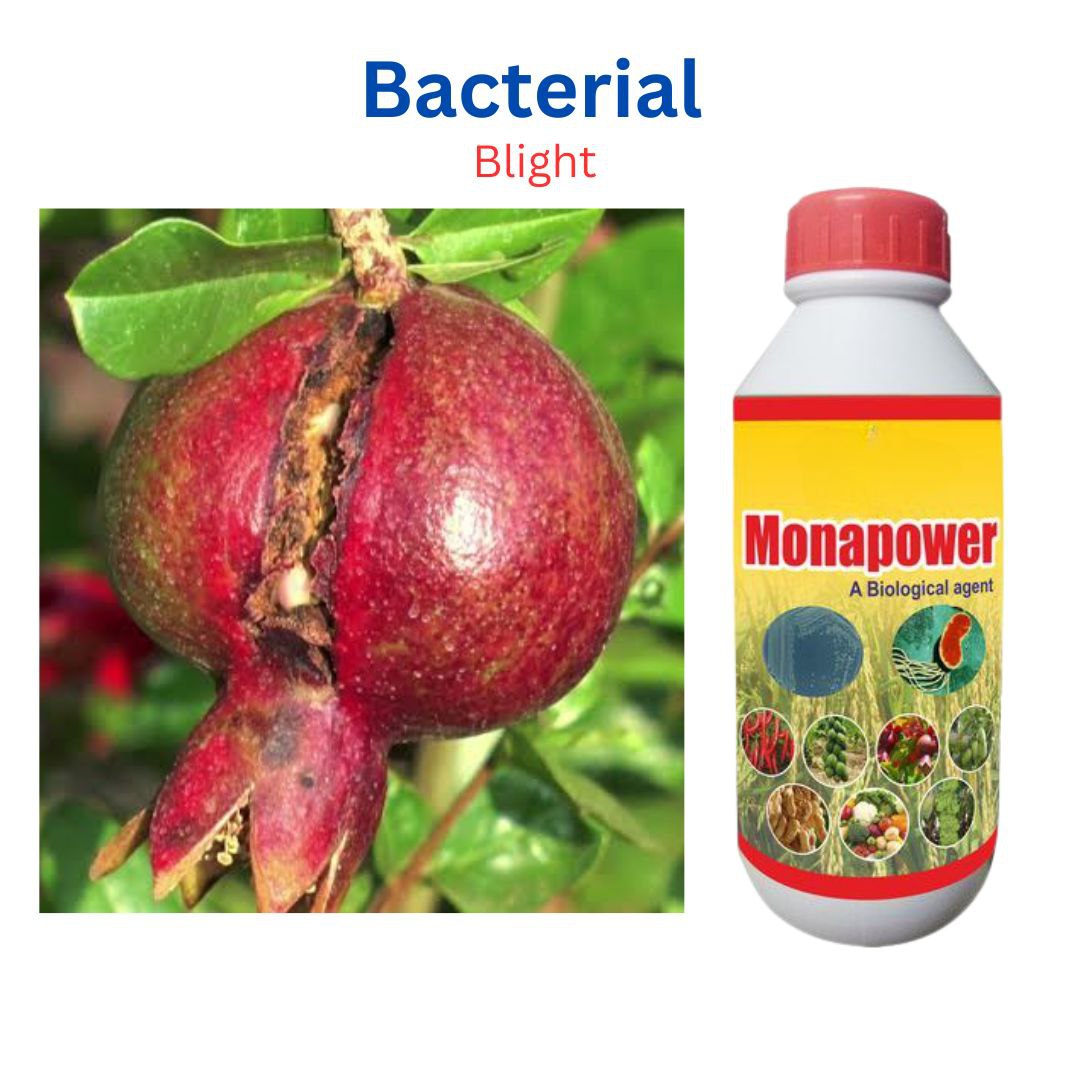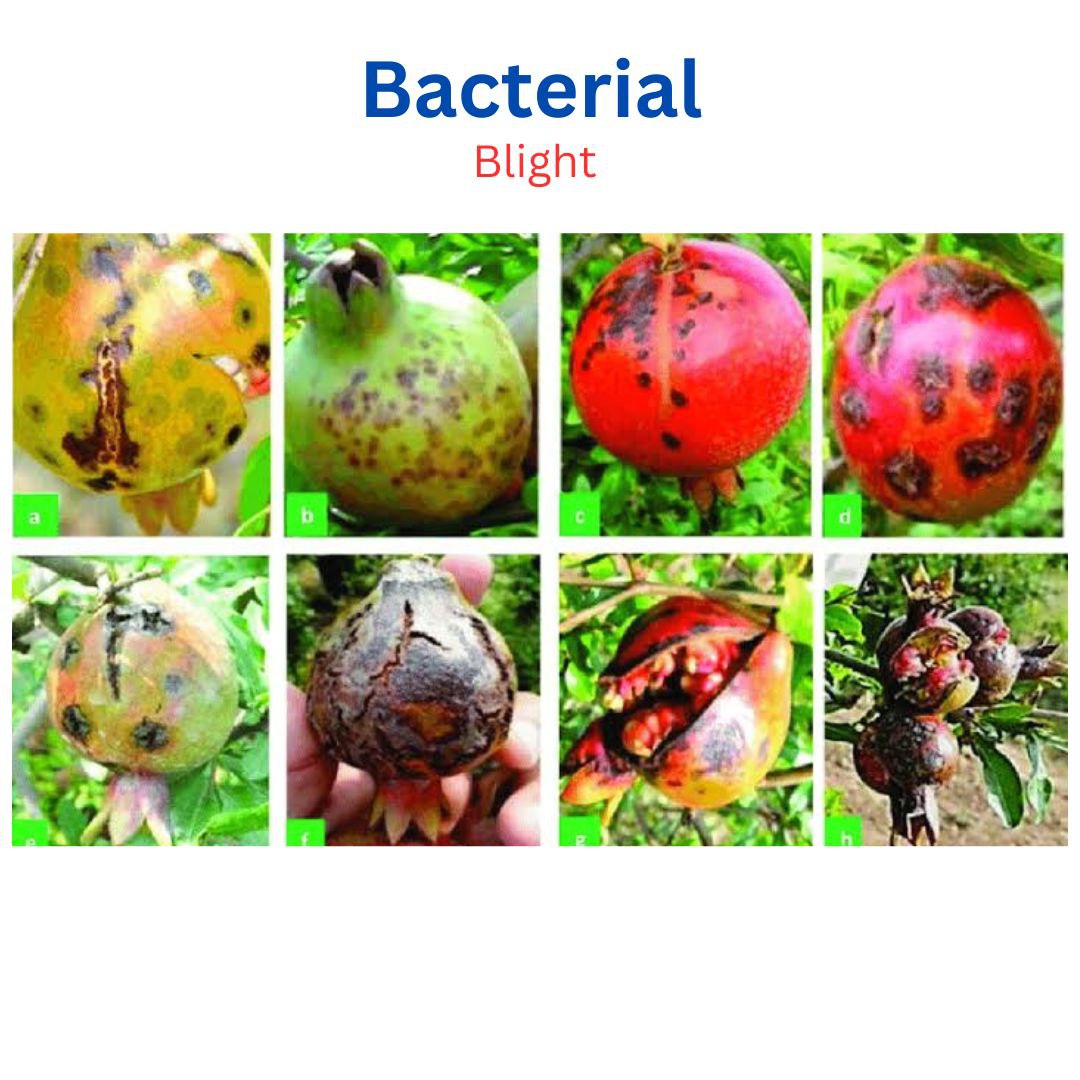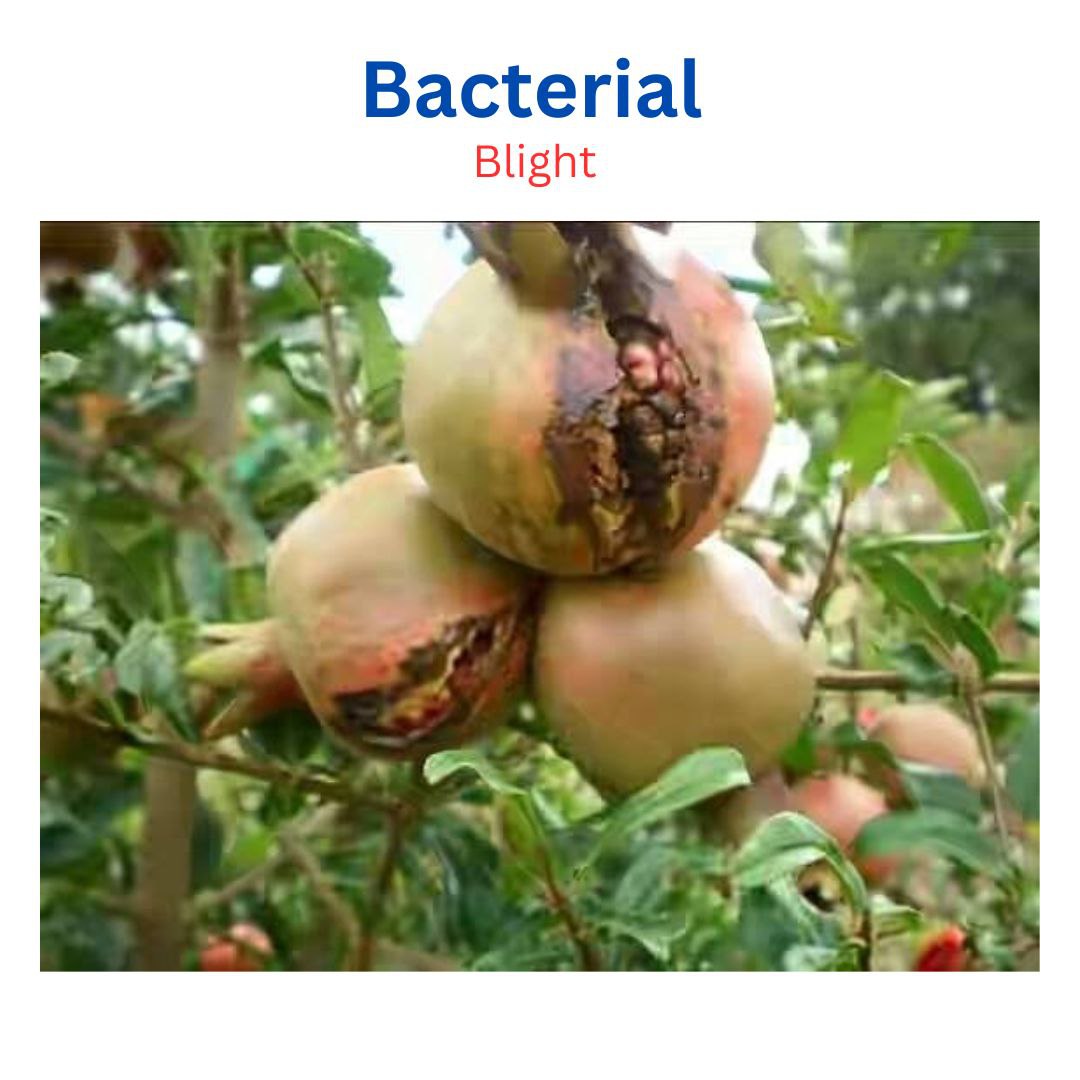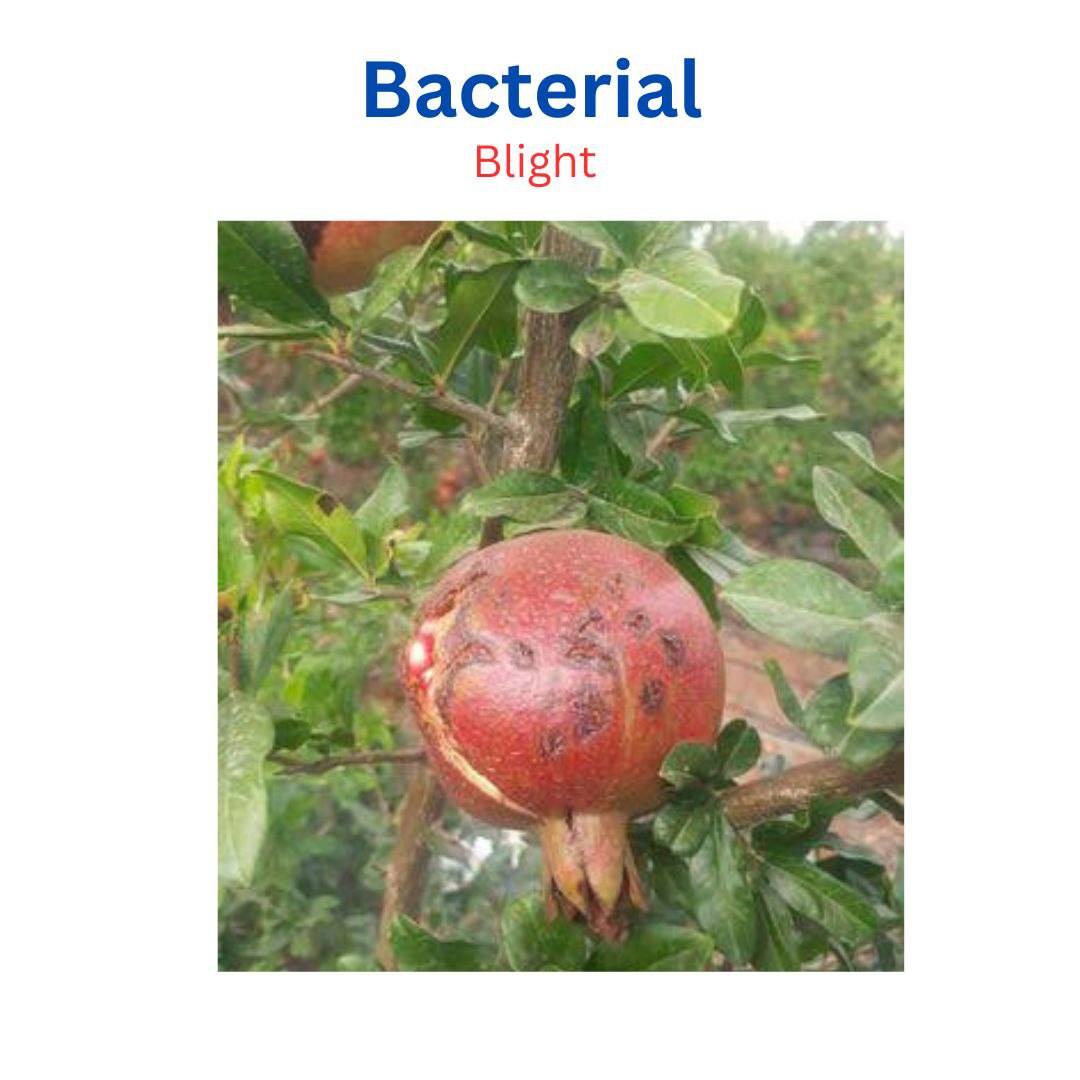Description
Bacterial blight
Bacterial blight is a major disease that affects pomegranate plants and can cause significant economic losses:
- Cause: Caused by the bacteria Xanthomonas axonopodis pv. punicae or Xanthomonas citri pv. punicae
- Symptoms: Reduces the quality and yield of pomegranate fruits
- Transmission: Spread by the bodies of visiting insects, such as thrips and aphids
- Management: Controlled with antibiotics, copper-based compounds, and fungicides
- Diagnosis: DNA-based diagnostics using polymerase chain reaction (PCR) are reliable and quick
Here are some other ways to manage bacterial blight in pomegranates:
- Use healthy and disease-free planting material
- Apply balanced nutrition to the plant
- Follow strict sanitation measures
- Spray the crop with streptocycline (500 ppm) or bronopol (500 ppm) + copper oxychloride (0.2 %)
- Apply 20 kg of well decomposed farm yard manure or 7 kg of well decomposed poultry manure per plant
- Apply 205 grams of nitrogen, 50 grams of phosphorus, and 152 grams of potash per plant









Reviews
There are no reviews yet.